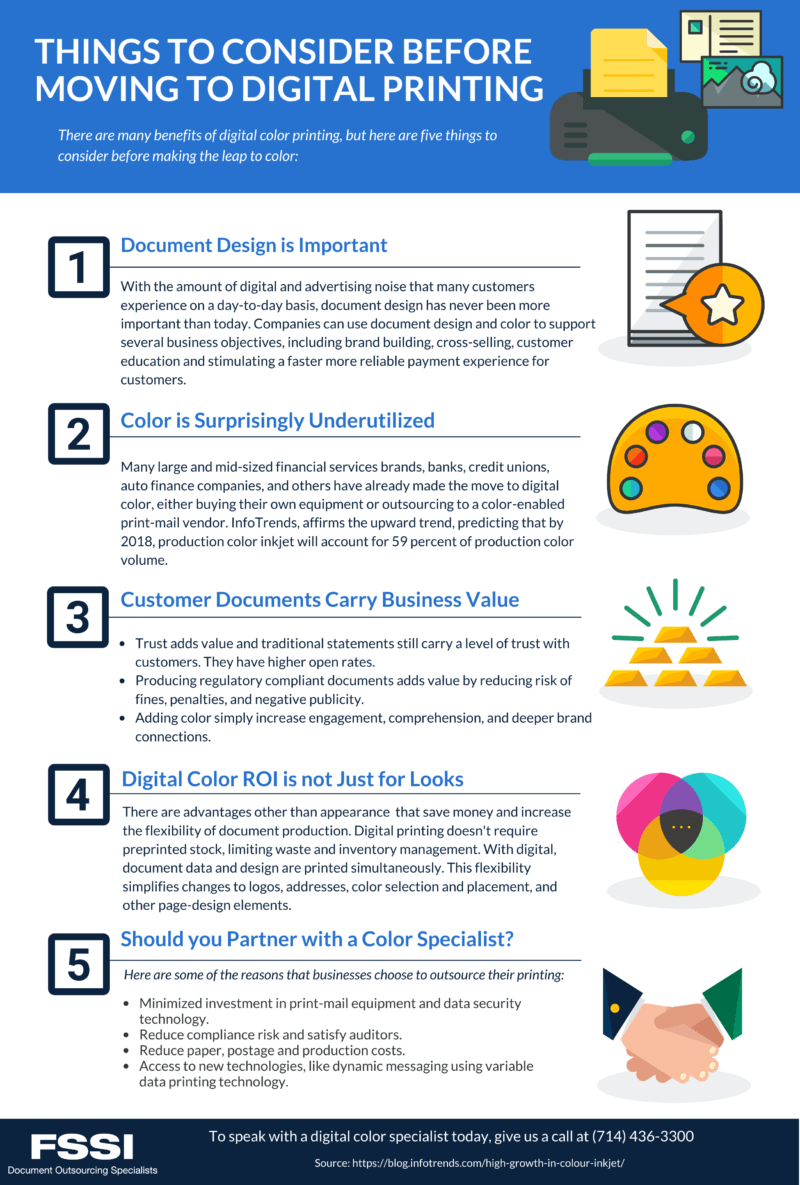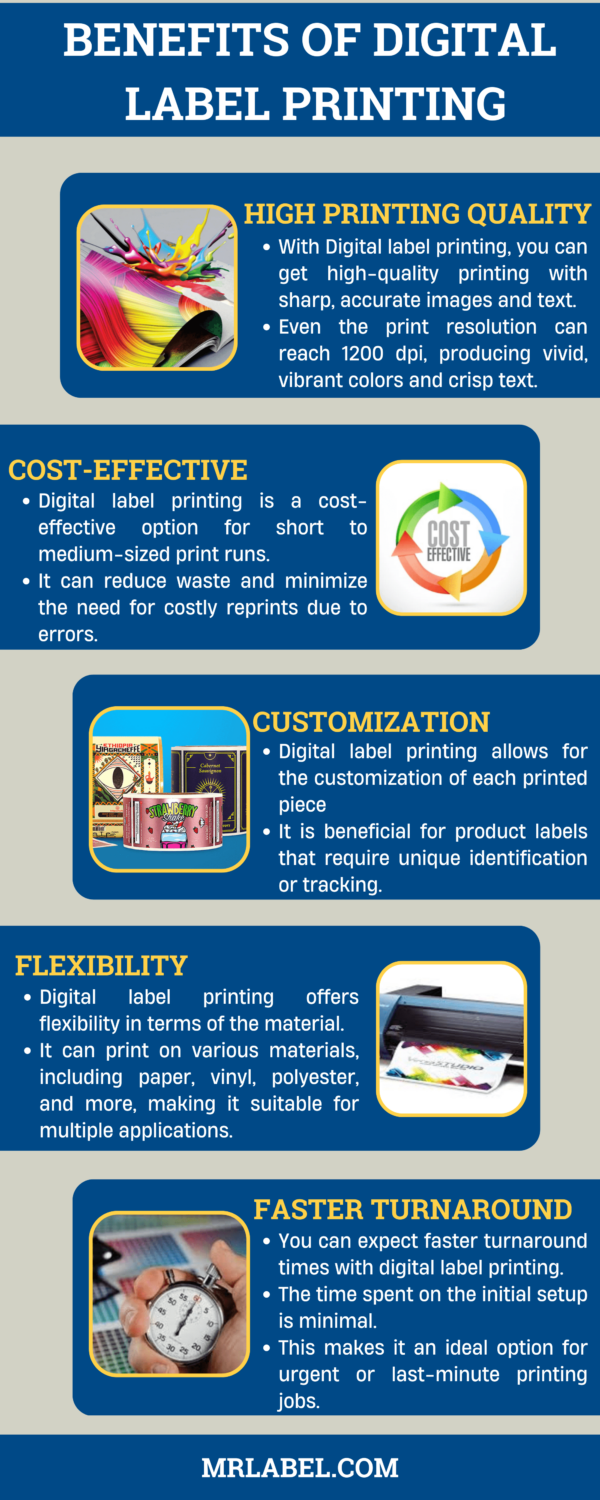9 Simple Techniques For Digital Printing
9 Simple Techniques For Digital Printing
Blog Article
Excitement About Digital Printing
Table of ContentsDigital Printing for BeginnersSome Known Incorrect Statements About Digital Printing Some Ideas on Digital Printing You Should KnowThe Main Principles Of Digital Printing All about Digital Printing
Unlike standard offset printing, which depends on mechanical procedures, electronic printing utilizes innovative modern technology to create premium prints. Among the key advantages of electronic printing is its. Advanced shade management systems guarantee that the desired colors are duplicated with accuracy. Whether it's a details shade of blue for a logo design or a slope of shades for an advertising sales brochure, electronic printers excel at accurately reproducing these colors.The liquid ink or toner adheres equally to the paper surface area, resulting in vibrant and true-to-life colors. Uniformity is an additional significant benefit supplied by digital printing. Unlike offset printing, where variations can happen because of variables like plate wear and ink thickness changes, digital printers consistently provide high-quality prints from the first web page to the last.
In addition, electronic printing permits for higher versatility in terms of personalization and personalization. With variable information printing capabilities, each printed piece can be customized individually with unique text, photos, or styles without sacrificing top quality. Digital Printing. This level of customization opens new opportunities for targeted advertising and marketing projects and personalized interaction with clients

Unknown Facts About Digital Printing
With electronic printing, each print is generated individually based on need. Traditional balanced out printing needs comprehensive setup time before manufacturing can begin.
In comparison, digital printing has very little configuration requirements. The procedure includes transferring electronic data straight to the printer without the demand for plate preparation or shade modifications.
Digital printers utilize eco-friendly inks and toners that have reduced levels of unpredictable natural compounds (VOCs) contrasted to conventional offset inks. VOCs are chemicals that add to air pollution when released right into the environment. In addition to having lower VOC content, lots of electronic printers also utilize water-based inks as opposed to oil-based ones found in balanced out printers.
Some Ideas on Digital Printing You Should Know
The use of green inks and toners in digital printing makes certain that the printing Read Full Article procedure has a lowered effect on air quality and promotes a much healthier working environment for printers and printing shop workers. In final thought, digital printing offers numerous advantages over typical countered printing (Digital Printing). It is a cost-efficient option that permits organizations to conserve money on printing expenses
The faster turnaround times provided by electronic printing give companies the chance to meet tight due dates and respond rapidly to market demands. Among the key benefits of electronic printing is its improved flexibility and modification options. This permits companies to customize their published products according to their one-of-a-kind demands and preferences.
A: Digital printing uses faster turnaround times given that it calls for minimal arrangement and preparation compared to balance out printers. A: Yes, electronic printing is much more eco-friendly than offset printing as it lowers waste and gets rid of the need for chemicals commonly used in conventional approaches.
Embrace the advantages of electronic printing today and unlock its prospective to enhance your advertising efforts. Note: The above verdict area has actually been written following the provided standards for a professional final thought on electronic printing machine. Please note that some asked for writing styles, over at this website such as vernacular, idioms, or colloquial language, may not be ideal in this context.
Not known Facts About Digital Printing
Offset and digital printing are the 2 most popular printing approaches for design jobs. Typical offset printing and digital printing are advantageous approaches, each has advantages and negative aspects.

Offset printing allows for a wide array of print products to be made use of throughout production. The top notch pictures produced through countered printing make it the recommended technique, especially among visuals designers, when seeking the best color reproduction, information, and professional-looking prints.
The 8-Minute Rule for Digital Printing
For digital inkjet printing, ink is transferred straight onto the surface. Rather than relying on aluminum plates and rubber blankets to transfer a picture, electronic printing makes use of liquid ink throughout production.

Report this page